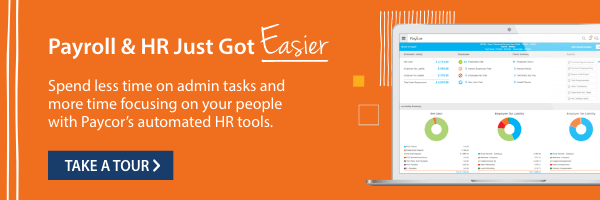We’ve all been there. It’s performance review time again and you’re desperately searching for what you wrote last year to find inspiration. You’ve got the required forms, your notes, and you’ve gathered your employee’s 360 feedback. The date is approaching and, in your opinion, you’ve set yourself up for a successful evaluation. But is your employee set up for success? When it comes to sharing feedback—negative or positive—the delivery can determine whether your employee leaves the meeting motivated or disengaged.
You certainly don’t want to overdo the praise and leave out critical growth opportunities. You also don’t want to make the employee feel terrible about the things that need to change. Sure, you might know what you’re going to say, but do you know how you should say it? This handy performance review template can help.
What is a performance appraisal?
A performance appraisal is just another term for a performance review. By definition, it’s the act of assessing an employee’s performance. Your organization might use an appraisal form that accompanies an annual meeting. Or you may use software to assist. Although methods have evolved for some, the performance appraisal has three basic functions, according to the Harvard Business Review:
- To provide adequate feedback to each person on his or her performance;
- To serve as a basis for modifying or changing behavior toward more effective working habits; and
- To provide data to managers with which they may judge future job assignments and compensation.
There’s a lot riding on the performance appraisal for both parties—from increased compensation to future more high-profile assignments. So when it comes to talking through feedback with your employees, it should be honest, unbiased, and direct. Feedback shouldn’t discourage the employee, but instead propel the employee forward. Chances are you already have a form that dissects performance into critical categories relevant to your workplace. Just in case you don’t, here are a few topics to focus on in a performance appraisal:
- Innovation
- Communication
- Accountability
- Professionalism
- Productivity
- Achievement
- Problem-Solving
Delivering Performance Appraisal Feedback
Good feedback should affirm positive performance and make employees consider what can be done in the future to move to the next level in their career paths. When delivering feedback, you should:
- Acknowledge an employee’s psychological needs, including feelings of autonomy, and sense of belonging. Also, assure the employee their work has value.
- Be specific and stick to the facts. Be objective and ensure you separate emotions from feedback.
Focus on how performance relates to the employee’s job description and goals. Discuss the ways in which the employee can move forward.

What is Performance Bias?
Performance biases occur when you make an assumption about an employee based solely on stereotypes. Avoid biases with these tips.
Writing a Performance Review
Nobody said writing performance reviews would be easy, but these tips will help:
Make it Regular
Whatever your current performance review cycle, making it more regular will help. You won’t be trying to cover so much, so it’ll take less time to prepare. A 90-day performance review cycle can work, but monthly is even better. The goal is for the process to become a continuous conversation, a back-and-forth where you’re always targeting new areas for improvement.
Begin with Wins
It always pays to start a performance review on a positive note. If an employee has achieved literally nothing, they should be on a performance plan. Even if you’re going to move on to criticism, reminding an employee of what they have achieved with your company sets the right tone.
Listen!
Traditional performance management often fails because it’s a one-way conversation. Here’s a secret: you can ask employees how they feel they’re performing. Understanding their challenges enables you to better target your feedback. When employees take time to reflect on their own performance, they may also be more receptive to what you have to say.
Be Specific
Whenever you can, use concrete examples. It’s true for positive feedback: Putting a number on how much an employee has contributed adds power to praise. But specificity is even more important for criticism. Employees can only understand where they can improve with reference to actual situations.
Be Future-Focused
Managers aren’t teachers and performance reviews aren’t school reports. If an employee has made a previous mistake, it’s okay to forget all about it. Criticism can be merited, but will it help future performance? You can point out an employee’s flaws, but they have no incentive to improve if they aren’t inspired by goals. Meanwhile, employees who are truly inspired by their work have a habit of figuring out their own way to success.
Set Measurable Goals
Performance reviews should be future-facing, concentrating on the work an employee will do, rather than what’s gone before. It’s called a review, but it should be just as much about setting targets for the future. What’s key is that these goals are measurable. Vague goals may sound inspiring, but it’s hard to judge whether or not they’re actually achieved.
Align with Company Vision and Values
Performance reviews should never be written in a vacuum. It’s not all about you and your direct report. You need to ask how you both fit within the overall business. An employee’s actions should be judged by how they align with company core values, and goals you set should be oriented toward the organization’s overall vision.
Use 360 Feedback
Why rely on one person’s perspective, when you’re part of a team? Great performance counseling and management includes the impressions of multiple team members. Employees should be evaluated not just by their managers, but by their peers, teammates, and their own direct reports. This way, you’ll get a more rounded picture of how an employee performs day-to-day.
Performance Appraisal Examples
Here are some examples of appropriate ways to deliver performance appraisal feedback:
- Work quality feedback: John, we appreciate all the work you did to assemble data for the annual report. This was the first year we’ve been able to share in a digital format! As we discussed earlier, one of the board members discovered some inaccurate information that could have been damaging if published. What measures have you put in place to avoid these kinds of mistakes in the future?
- Performance feedback: We received great feedback from your clients about you. We are incredibly grateful you are part of the team. According to our reports, you’ve exceeded your goals for the year already. What knowledge are you sharing with the team about how to replicate this success and what do you intend to accomplish in the next quarter?
- Initiative feedback: In this role, you created a process where there wasn’t one before. Our productivity is much higher thanks to your contributions. Please continue to speak up when you see opportunities for us to improve.
- Skills/Opportunity feedback: Donald, you are extremely enthusiastic about your work, and your energy is infectious. Some of our clients ask for you, which is rare in the pest control industry. Have you ever considered taking on a training role to share some of your tips for building rapport with customers and providing stellar customer service?
- Performance feedback or needs assessment: Velma, your project feedback for residential jobs is great but there are some opportunities for improvement when it comes to commercial jobs. Would you like to discuss your preferences so that we can give you more assignments where you’ll thrive?
- Misaligned skills feedback: Winnie, you are known for your kindness by everyone who meets you; however, this sales position requires more determination and a competitive spirit. What are your goals for this role? Would you like to explore other options within the company that might be better suited?
Performance Appraisals vs. Performance Management
Performance appraisals typically only happen once a year, while performance management is an ongoing, year-round process. Annual reviews force us to rely on our memory and are subject to recency bias, which means we only evaluate what we can remember.
If you believe the annual performance appraisal process in your organization could be improved with more frequent feedback, performance management software can help. Paycor’s Talent Development solution makes this possible with:
- Automated workflows so your people can focus on coaching, not unnecessary admin.
- Customized templates to help managers make the most out of 1:1s with direct reports.
- Feedback tools facilitating conversation between peers, teams and supervisors.
- Integrated goal-setting features designed to supercharge productivity.
- Easy access to historical feedback, boosting accountability and reducing bias.
How Paycor Helps
Paycor’s Talent Management software fosters a culture of feedback, employee recognition, and team spirit. Managers can use these tools to track key metrics, evaluate employee performance, and upskill their teams. Employees can go online and recognize each other, share feedback in a psychologically safe environment, and review their own progress.
Our suite of HCM software is purpose-built for leaders. With Paycor, you can operationalize every aspect of people management—including how you celebrate each win.










